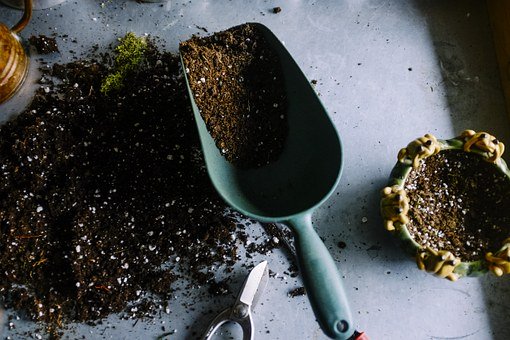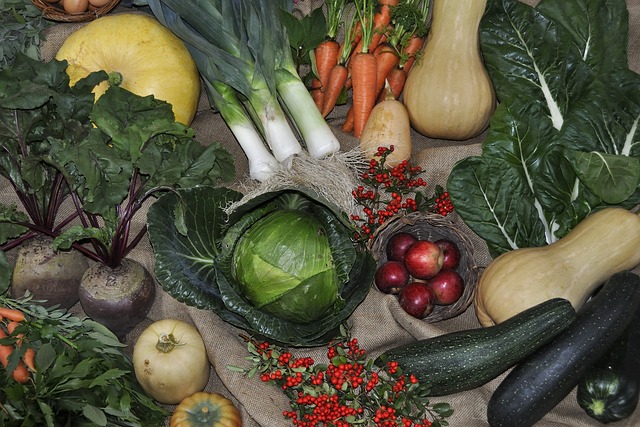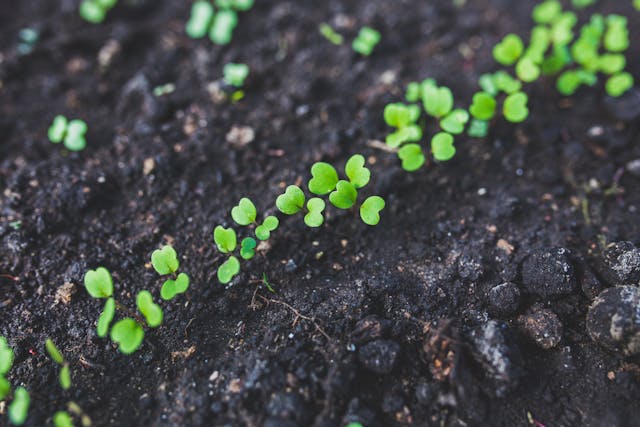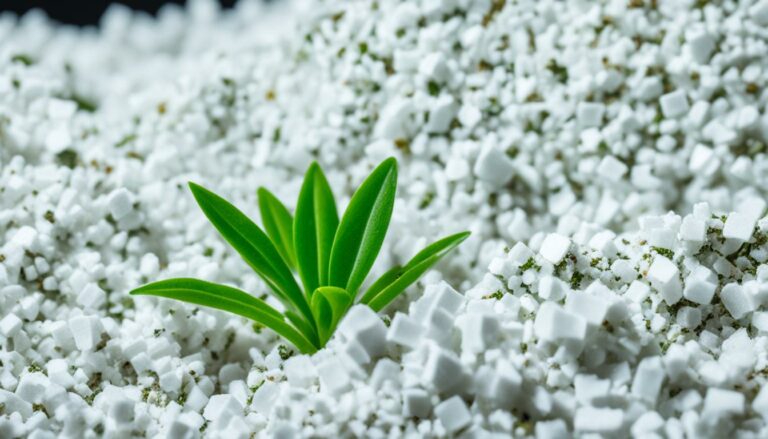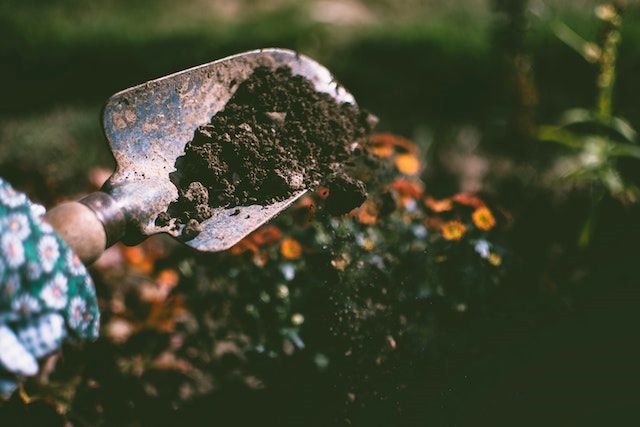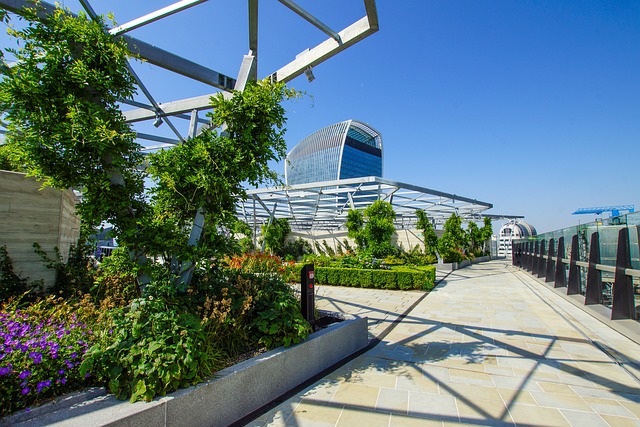Kick-Ass Tips to Prep Soil for Your Vegetable Garden
[et_pb_section fb_built=”1″ admin_label=”section” _builder_version=”3.22″][et_pb_row admin_label=”row” _builder_version=”3.25″ background_size=”initial” background_position=”top_left” background_repeat=”repeat”][et_pb_column type=”4_4″ _builder_version=”3.25″ custom_padding=”|||” custom_padding__hover=”|||”][et_pb_text admin_label=”Text” _builder_version=”4.8.1″ background_size=”initial” background_position=”top_left” background_repeat=”repeat”]
It’s time to get down and dirty and prep your soil for your next vegetable garden!
Gardening can definitely be bitter-sweet at times. It’s a great way to relax, being outdoors in the sun and getting your hands dirty, but there are a few things that really do frustrate me.
One is the weeds.
But the second is forgetting to prep the garden soil correctly for my vegetables. Vegtable plants need to have the right type of soil for optimum growth, and each plants likes different things.
Just like if we go to McDonalds and I order a Fanta and you order a Coke, some plants before nitrogen, some prefer more calcium – and it goes on and on.
[/et_pb_text][et_pb_text admin_label=”H2 – common garden soil problems” _builder_version=”4.8.1″ _module_preset=”default”]
Common Garden Soil Problems (and remedies)
[/et_pb_text][et_pb_text _builder_version=”4.8.1″ _module_preset=”default”]
Always remember that the SOIL needs to be right for your plants to grow well.
Soil is most likely THE most important component when it comes to growing vegetables.
Usually, the soil in your garden isn’t great for growing veggies. You will need to do some work before you start planting to make sure that the soi has sufficient nutrients for the plants to thrive.
Before you start sowing your seeds, you have to prep your garden soil for your vegetable plants.
BUT – when you are growing food at home in containers and you need to fill them with soil, buy potting soil from your garden centre. 99% of the time, this potting soil has already been mixed with all of the good things that your plants will ned.
[/et_pb_text][et_pb_image src=”https://www.urban-gardener.co.za/wp-content/uploads/2021/08/Banner-best-way-to-check-soil-is-test-it-1.png” alt=”An image of a ph scale telling the reader the best way to check the soil is to test it” align=”center” admin_label=”Image – banner – test the soil” _builder_version=”4.8.1″ _module_preset=”default”][/et_pb_image][et_pb_text _builder_version=”4.8.1″ _module_preset=”default”]
A common problem with using the soil that is already in your garden is that the pH levels are most probably way off, compared to what they should be.
It might be too acidic or too alkaline and this would inhibit the plant to draw up nutrients through the roots, even though there might be sufficient nutrients in the soil.
The good news is that these two things are simple to fix and can be done relatively quickly, however you need to check what the plants prefer before you start playing around with the soil.
Use a pH reader to easily test for alkaline and acid levels.
You simply take the pH reader, make sure it’s clean, stick it at least an inch into the soil (use distilled water to moisten the soil), and let it sit for one to two minutes.
These meters are not 100% accurate but they are as close to as you can get for doing this yourself at home.
With regards to the pH meter, there are various makes and models around that aren’t very expensive. You do get the ones with the dial as well as digital ones, so it all comes down to personal preference.
Remember, the higher the reading, the more alkaline the soil is. The lower the reading, the more acidic the soil is.
Now that you know what your soil is, you can adjust it.
Continue to check the soil throughout the growing season as the levels might change and you will need to adjust accordingly to ensure that your vegetable plants continue to receive their required nutrients.
[/et_pb_text][et_pb_text admin_label=”Too acidic” _builder_version=”4.8.1″ _module_preset=”default”]
Too acidic
Acidic soil is easy to fix. There are a handful of successful organic products that you can add to the soil to adjust the levels.
- Epsom salts
- Powdered lime
- Wood ash
Using these products (only select one, you don’t need all three) to highly acidic soil to neutralize the acid in your soil and help nourish your plants so they don’t experience a cyanide-producing disorder called blossomed end rot.
When making your own compost for your garden with acidic soil, compost more eggshells for a higher calcium level.
Some acid-loving vegetable plants: radishes, sweet potatoes, peppers, onions, rhubarb, blueberries
[/et_pb_text][et_pb_text admin_label=”Too alkaline” _builder_version=”4.8.1″ _module_preset=”default” hover_enabled=”0″ sticky_enabled=”0″]
Too alkaline
Sometimes the soil is not acidic enough. Again, you need to check on the veggie plants that you want to grow. With this problem, plants cannot absorb nutrients to grow, which can happen when the ground has grown potatoes or been without fertilizer for a while. (This is the reason for crop rotation. Not the potatoes, but certain plants can grow in soil after other certain plants).
Soil that is too alkaline can be fixed in a few simple ways like applying nitrogen and sulfur fertilizers. If you add too much, use lime to reduce the acidity level of the soil.
A natural way to sort out this problem is to plant a nitrogen-fixing plant, like green beans. As they grow, they will naturally raise the pH of the soil.
Some alkaline-loving vegetable plants: pole beans, Brussel sprouts, cabbage, cauliflower, asparagus
[/et_pb_text][et_pb_text admin_label=”H2 – Different types of garden soil” _builder_version=”4.8.1″ _module_preset=”default”]
Different Types of Garden Soil
[/et_pb_text][et_pb_text admin_label=”Sandy soil” _builder_version=”4.8.1″ _module_preset=”default”]
* Sandy soil
 Just because sand tends to make up the majority of your soil doesn’t mean you do not have options to fix the soil so it can hold moisture and nutrients for your plants. Sandy soil takes time and a bit of investment to fix, but it can be done. Adding a big batch of compost is a great way to loosen up sandy soil and make it better for your plants relatively quickly. You will find that this continues to break down and will become shallower in your garden if you do not keep adding to it. If you have your own composter this will not be a challenge to keep up with for most families. At the end of each planting season, till in the stalks and leaves from your plants after your harvest. You can also add in grass clippings and leaves you have raked from your yard to build up your soil. If you’re raking grass into your garden beds, just know that the chances are high you’re going to be spending a lot of time weeding.
Just because sand tends to make up the majority of your soil doesn’t mean you do not have options to fix the soil so it can hold moisture and nutrients for your plants. Sandy soil takes time and a bit of investment to fix, but it can be done. Adding a big batch of compost is a great way to loosen up sandy soil and make it better for your plants relatively quickly. You will find that this continues to break down and will become shallower in your garden if you do not keep adding to it. If you have your own composter this will not be a challenge to keep up with for most families. At the end of each planting season, till in the stalks and leaves from your plants after your harvest. You can also add in grass clippings and leaves you have raked from your yard to build up your soil. If you’re raking grass into your garden beds, just know that the chances are high you’re going to be spending a lot of time weeding.
[/et_pb_text][et_pb_text admin_label=”H3 – heavy clay soil” _builder_version=”4.8.1″ _module_preset=”default”]
* Heavy clay soil
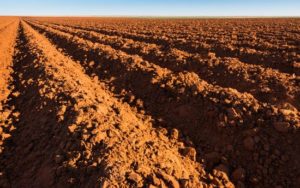 Think of potters’ clay. When you use it, you can lump it together quite solidly and it will retain its shape. While fun to play with, for a plant this is not good news. Soil clay does not have space to allow roots to grow, it is too compact and there are serious drainage issues as well. The key to making clay soil usable is to continuously add organic materials to break up the clay and improve the drainage of the soil. Add old mulch, leaves, and large amounts of compost to clay soil. Much like with sandy soil, at the end of each season, till your plants after harvesting to help build it up with the organic matter. Aeration is important if you are working with clay soil. Tilling provides aeration when planting your beds, and the best way to get air into your yard is by wearing aeration shoes that have spikes on the bottom that you wear while mowing or raking.
Think of potters’ clay. When you use it, you can lump it together quite solidly and it will retain its shape. While fun to play with, for a plant this is not good news. Soil clay does not have space to allow roots to grow, it is too compact and there are serious drainage issues as well. The key to making clay soil usable is to continuously add organic materials to break up the clay and improve the drainage of the soil. Add old mulch, leaves, and large amounts of compost to clay soil. Much like with sandy soil, at the end of each season, till your plants after harvesting to help build it up with the organic matter. Aeration is important if you are working with clay soil. Tilling provides aeration when planting your beds, and the best way to get air into your yard is by wearing aeration shoes that have spikes on the bottom that you wear while mowing or raking.
[/et_pb_text][et_pb_text admin_label=”H2 – different ways to fix your garden soil” _builder_version=”4.8.1″ _module_preset=”default”]
Dealing with Garden Soil that is Too Wet, or Too Dry
[/et_pb_text][et_pb_text _builder_version=”4.8.1″ _module_preset=”default”]
When it comes to watering your plants, rather give too little than too much water.
Too much will drown the roots, they’ll rot, and your plants will die.
But this is the mistake of most people!
If your soil is too dry, you may need to increase your watering time. Adding mulch on top of the soil around the base of your plant for water retention is a good idea, and it looks better too.
You can prevent your soil from being too wet or too dry depending on the season by using lots of organic material when planting.
I have learned the hard way, with a few casualties as well, that it is better to let the plant go without water for a couple of days than to overwater it. It is easier to fix dry soil than soil that is too wet. Think of plants in nature – without human interference. They can go longer than you think without being watered.
My best tip for this would be to tell you to let the soil dry out. Stick your finger into the soil and feel if it’s wet or dry. You can use a moisture meter to tell you how moist the soil is, but your finger will work just as well.
[/et_pb_text][et_pb_text admin_label=”H2 – Conclusion” _builder_version=”4.8.1″ _module_preset=”default”]
Conclusion
[/et_pb_text][et_pb_text _builder_version=”4.8.1″ _module_preset=”default”]
Soil can be a difficult subject to understand, and even more difficult when it’s not working for you!
Very frustrating. I’ve tried to put together some easy ways that you can fix the most common soil problems, now let me know which ones worked best for you by leaving a comment below.
[/et_pb_text][/et_pb_column][/et_pb_row][/et_pb_section]
